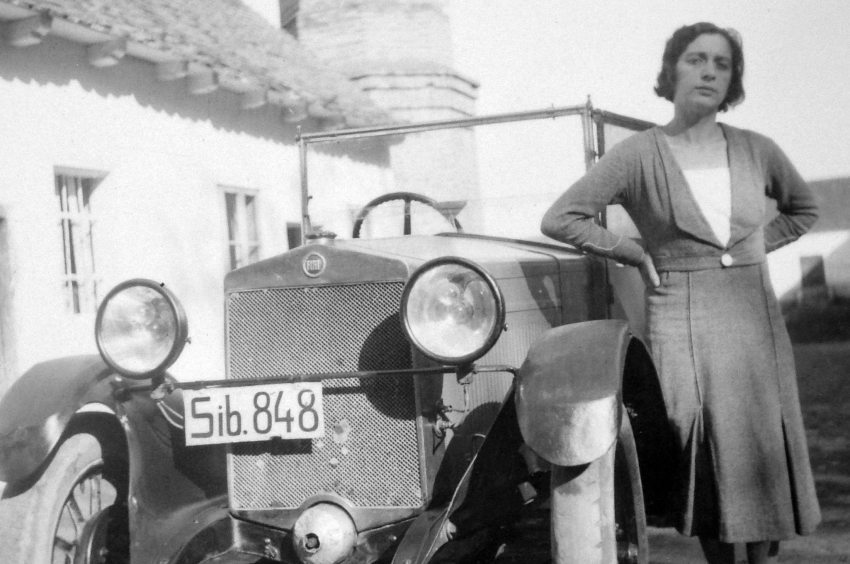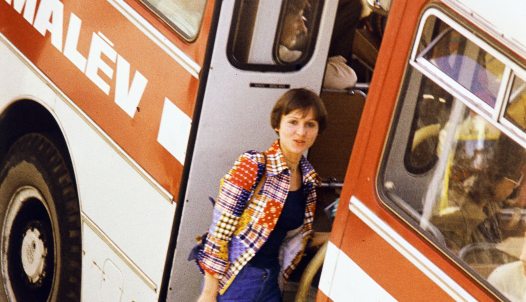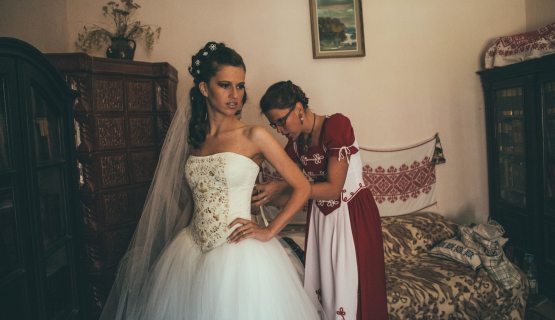Conservative feminism during the Horthy era brought significant advancements in women’s emancipation
Barbara Papp is a remarkable historian: she toppled a taboo of several decades by coming not to an ideological nor biased, but rather a rational conclusion on the processes of women’s emancipation in the Horthy era by researching contemporaneous sources. We might believe that this approach is self-evident three decades after the change of system, yet it is not so: still today, only few historians are able to free themselves from Marxist and other ideological, single-track interpretations of history.

“My principal topic is Hungary in the 20th century. I am particularly interested in events that cannot be ranked in major political trends, that are to do with everyday life and private lives. Periodicals, memoirs, diaries and personal reminiscences have become important sources for me. True, part of the profession does not accept these as full-right documents but even so there are ever more of us dealing with history from the ‘micro-angle’, from the viewpoint of individuals.”
In historical works dating from the Kádár period and even after the change of system, the Horthy era was portrayed as one of stagnation or rather reversal from the aspect of women’s emancipation. Your book ‘Modern, diplomás nő a Horthy-korban’ (Modern, educated women in the Horthy era) written with your co-author historian Balázs Sipos makes this image more nuanced and authentic.
“When we started research from primary sources, for example, statistics, periodicals writing about the situation of women, parliamentary speeches, acts, we were surprised to see how inaccurate earlier assessments had been.”
What picture did you get of women’s movements in the Horthy era? What sort of main trends were asserted in the period?
“The liberal Feminist Association, associated with the name Róza Bédy-Schwimmer, played a defining role before the First World War. However, after the war they lost their social opportunities, they withdrew and two of their leaders actually moved abroad. Their endeavours were only partly progressed by the similarly liberal associations of Bródy Ernőné and their journal, Dolgozó Asszonyok Lapja (Journal of Working Ladies).
“The social structure in the interwar period allowed room for manoeuvre primarily for conservative women’s movements, which professed not the internationalist and, to a certain extent, ‘manly’ trend of the earlier feminist movement but instead they represented feminine, motherly and national-based emancipation ambitions.
“They considered it important that the work of women be valued on an equal basis to that of men, that all university studies should be available to women and that they should receive suffrage. For example, those women graduates of universities and colleges who belonged to the inner circle of intellectuals of the public journal Magyar Női Szemle (Hungarian Women’s Review) wanted to show society that a woman’s intellectual professional career was not in contradiction with being a mother. Their organization rallied around Margit Techert Magyaryné.
“The most conservative women’s umbrella organization with the biggest membership of the time, The National Alliance of Hungarian Ladies (MANSZ) hallmarked by the name of Cécile Tormay, was partly with them but largely opposed. MANSZ’s journal was called A Magyar Asszony (The Hungarian Lady). Its member organizations supported the government’s revisionist policies and representation, and on the whole uniformly represented the principle of ‘ladies remaining at home’, which was justified first and foremost as protection of the nation. Of course, aside from these there were very many other smaller women’s associations. Non-lobbying, for example, charitable groups and press material directed at women communicated the image of active women interested in doing something for society.”
Several historians only apply the label ‘feminist’ to liberal or social democratic female activists, saying that they represented women’s genuine efforts at full equality of rights. They reckon that conservative women’s activism just fought for a ‘minimal programme’, partial results, in the meantime accepting the traditional roles of women. Do you think this is the actual situation?
“I consider this differentiation to be artificial since conservative women activists also called themselves feminists, although it is true that they distanced themselves from the combative suffragette branch of feminism considered to be ‘damaging to the nation’. The goal of their efforts at improving society was raising up disadvantaged women and children, but they also supported men in difficulty and they were very troubled by the fate of the country dismembered in the wake of the Trianon Treaty. I wouldn’t call, for example, a ‘minimal programme’ the fact that they were demanding universities be fully opened for women, or that the educated woman could continue her profession and vocation after marriage. We can use the term feminist for them as well, respecting their work and the fact that they also considered themselves like that.
“In many cases, I consider it unnecessary to differentiate between left wing and conservative feminists because the majority of their endeavours were identical. However, their style – rhetoric and use of words – was different.
“A revolutionary, harsh, aggressive stance stood far from conservative women at the level of word usage. The justifications for their emancipation ambitions also differed: they used biological arguments, but they also brought in principles of Christian creation when proving the equality of men and women, and they placed great emphasis on improving the country, furthering the prosperity of the nation, as well as healing war and Trianon traumas as being among the tasks of women.”
In their book, they call conservative women’s endeavours mother-based feminism, because they considered family and motherhood to be an outstanding positive value, and they wanted to reach the point where the role of working women should be compatible with their role as mothers.
“In the interwar period, many graduate women achieved this very thing. An increasing number had jobs while married and even after having children. It is true that they related to their work, their colleagues and factory workers with caring responsibility; social democratic women did the same thing with a slightly comradely disposition.”
Can one state that the development of the fate of women was significantly shaped by conservative feminism between the two world wars?
“Yes. The Association of Hungarian Women Graduates of University and College (established: 1925), or more accurately, those involved with their journal, Hungarian Women’s Review, who rallied around Margit Techert Magyaryné, formed one of the most significant groupings of women’s interest representation of the Horthy era.
“They were most effective at defending themselves against those strong views formulated most sharply by educational politician Gyula Kornis in his article from 1925: women are unsuitable for intellectual careers, their exclusive vocation is the family and motherhood, and this does not require higher education and a diploma.”
In the late 19th century, a huge social debate erupted over whether women’s physical condition and brain capacity made them at all suitable to fill intellectual positions bearing responsibility. Doctors, scientists, politicians voted for one side or the other.
“This dispute spilled into the first third of the 20th century, although the mass base of those professing women’s unsuitability gradually declined. Years later, Gyula Kornis himself also participated in the university private docent exam of philosopher Margit Techert Magyaryné and spoke highly of her.”
Who were the defining, influential female personalities of this period?
“It is difficult to pick out just a few. Margit Techert was a doctor of philosophy and a university professor, she edited a journal and she was the wife of Zoltán Magyary, an important scientist and statesman. I must mention from the conservative feminist circle, without covering everybody, Emma Ritoók, writer and aesthete, Mária Vendl, expert in minerology, Margit Prahács, musicologist, Edit Fél, ethnographer, Marianne Czeke, the first librarian – but they did not attempt to raise the profile of themselves, the association was characterized by sisterhood, they appeared to the outside world as a unified female camp. They had a separate room at the Budapest university, they held lectures and career advisory sessions, and they represented themselves in the leadership of the universities in Pécs and Debrecen.
“Their example and attitude had a great impact on women who wanted to study.
“Cécile Tormay represented the other end of the spectrum. In 1919, she founded the abovementioned MANSZ, which numbered several hundred thousand members by the second half of the 1930s. Her novels proved incredibly popular both in Hungary and abroad, she was editor in chief of the literary periodical Napkelet, and she became a celebrity.
“And of course we must not forget those special promoters of emancipation, the highly influential actresses of the day, for example, Lili Muráti, Mária Mezei and Katalin Karády. They projected the image of a self-aware, funny, liberated, erotically seductive woman interested in enjoying life. Films even reached women in the villages thus the divas of the period created fashion and became role models. It happened on more than one occasion that graduate women considered their influence to be a caricature of emancipation and they felt they actually harmed the cause.”
Did the association of graduate women have social campaigns?
“They tried very hard to remain politically neutral; in the journal they gave British, German and Soviet examples of ‘women’s achievements’. In practice, too, they wanted to show an example and exercise influence more through gentle persuasion and by pursuing careers in science.
“They regarded all their published studies and books as sowing seeds so that others would follow suit.
“But they also did charity work, they travelled out to the villages, organized female caretaker positions in factories and supported midwives and district nurses. They assisted middle schools operating on modest budgets with scholarships and donated furnishings for halls of residence. Their charitable activities were also ‘motherly’ in nature and primarily directed towards recruiting women for scientific careers.
“During the period preceding the war, the pace of modernization increased in all areas. Living conditions changed so that it no longer required a certain ideology for the transformation of social relations and roles.
“It is sufficient to consider the move away from wearing folk costume, the modernization of households, the reduction in the size of city dwellers’ apartments, and so on. All these changes in themselves meant that women’s roles and work had to be rethought.”
I find it surprising that even high-ranking statesmen supported the cause of women’s emancipation, work and higher education. For example, Kunó Klebelsberg, who declared that the more educated a woman was, the more she became aware of her inner value.
“We are the first to point this out in our book. Earlier, history works drummed into people that the Horthy era resulted in regression from the aspect of women’s emancipation, and there was absolutely no legislative programme that served their interests.
“Contrary to this, we actually see that during the Horthy era an ever-increasing number of women graduated from higher education, ever more were able to pursue salaried work besides caring for their families, and their cause found supporters in the highest circles.
“Although it is a fact that up until the Second World War total equality was not achieved in learning and employment, this was not exclusively a Hungarian phenomenon.”
What was the role of religious denominations in the women’s emancipation movements?
“Nuns who maintained their communities through work and were relatively independent of men have long been a role model for the working woman. Furthermore, it was a tradition among the Christian denominations for girls – at least girls from middle class families – to be educated. Indeed, at that time one could frequently hear that it was a battle to make a living, not every girl could expect to get a husband, so it was important to learn a profession in order to be able to keep oneself. For example, the books of higher elementary school teacher Jolán Gerely on career choices and self-help were printed by an ecclesiastical publisher and proved to be bestsellers. She recommended acceptable professions that paid a living wage for girls from a business point of view as well. The world in which women were seen as only capable of carrying out auxiliary work or jobs that meant they kept their hands clean had come to an end. They had to choose that profession where there was demand. Of course, she expressed the view that if at all possible, once the woman had married she should rather stay at home. But a woman could still live a complete life even if she did not find a husband, instead finding a vocation that allowed her to nurture her ambitions.”
The Christian feminist movement of Margit Slachta, the first female member of parliament in Hungary, was also significant. Members of the monastic community took part in social and political campaigns designed to raise women and families.
“The Catholic movement Society of Social Brethren extended throughout wide circles although their opponents threw the accusation at them that what they were doing was as irrelevant as scratching away at the tip of an iceberg. All church denominations had women’s movement groups, the Reformed, Evangelical and Israelite congregations also operated charitable associations undertaking social missions within their own areas.”
Charity and ‘feminine’ care are also social acts. We frequently undervalue social assistance campaigns from a movement point of view, even though they have a society-shaping influence.
“I also think like this. Even more so because undervaluing social work and its society-shaping influence can be observed even today.
“Naturally, we can say that the conservative women’s movement did not change all of society, it did not achieve all its goals, but if we look at individuals, for example, how many of them could go on to further education thanks to association scholarships, then in a year even ten people count because the possibilities for those ten improved significantly. Not to speak of the fact that there were some who, thanks to this, escaped from prostitution.”
The Second World War marked a sharp break in the history of women’s movements. What was successfully preserved and further developed under socialism?
“This was a sharp caesura in the life of major personalities as well, many died in the course of fighting or deportations. For example, Margit Techert and her husband committed suicide because of the brutalities of Soviet soldiers. In the case of a profoundly religious Catholic couple, this is an especially harrowing act. In the new post-war society, everything that was considered traditional and civil became an object of suspicion, so it is no surprise that in just a few years all civil and church organizations disbanded. Although universities were opened to women, the earlier gender-based discrimination was replaced with discrimination based on origin. Workplaces could not be chosen, they were allocated.
“The so-called period of socialism created a contradictory situation for women. It opened up many opportunities but at the same time it created specific exploitation. The traditional model of the man-woman relationship continued to function in social conditioning and in private life. Women became and were in one person wage-earners, wives, mothers, and domestic ‘workers’. Only a narrow social segment was interested in women’s inequalities.”
This is how we got to the change of system, 30 years ago, in 1989, when a new chapter opened, but that is the topic of another conversation.






